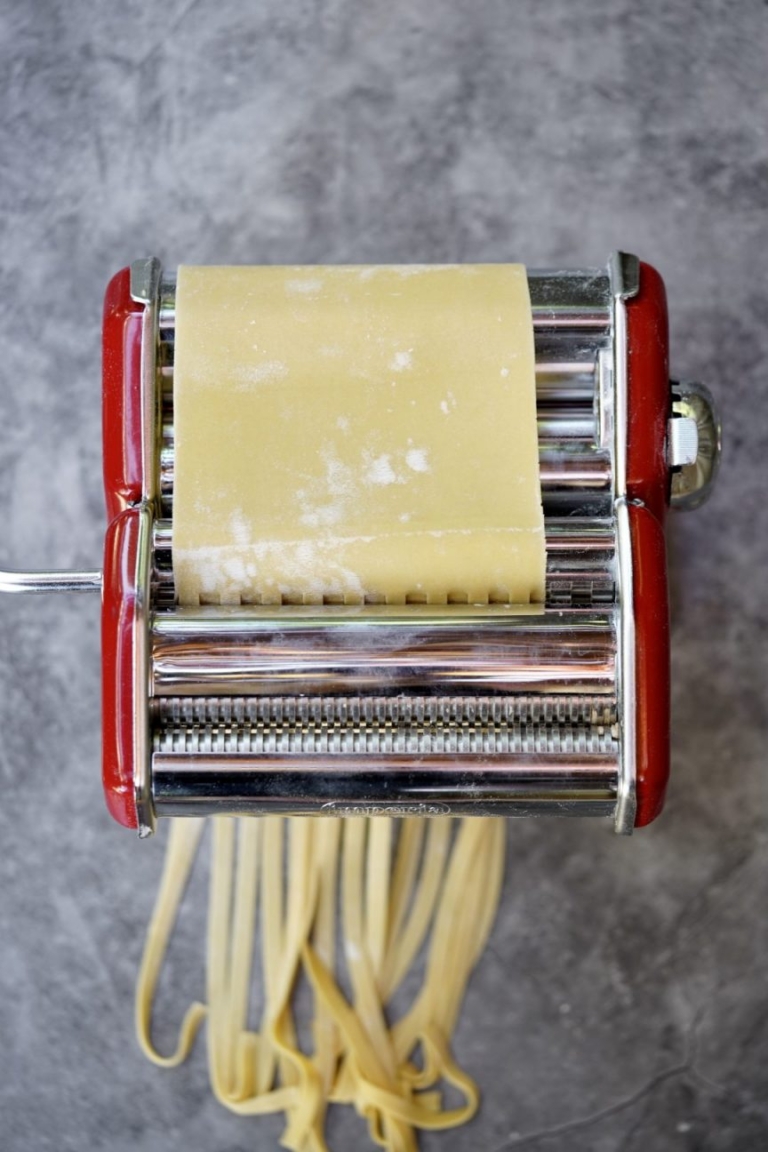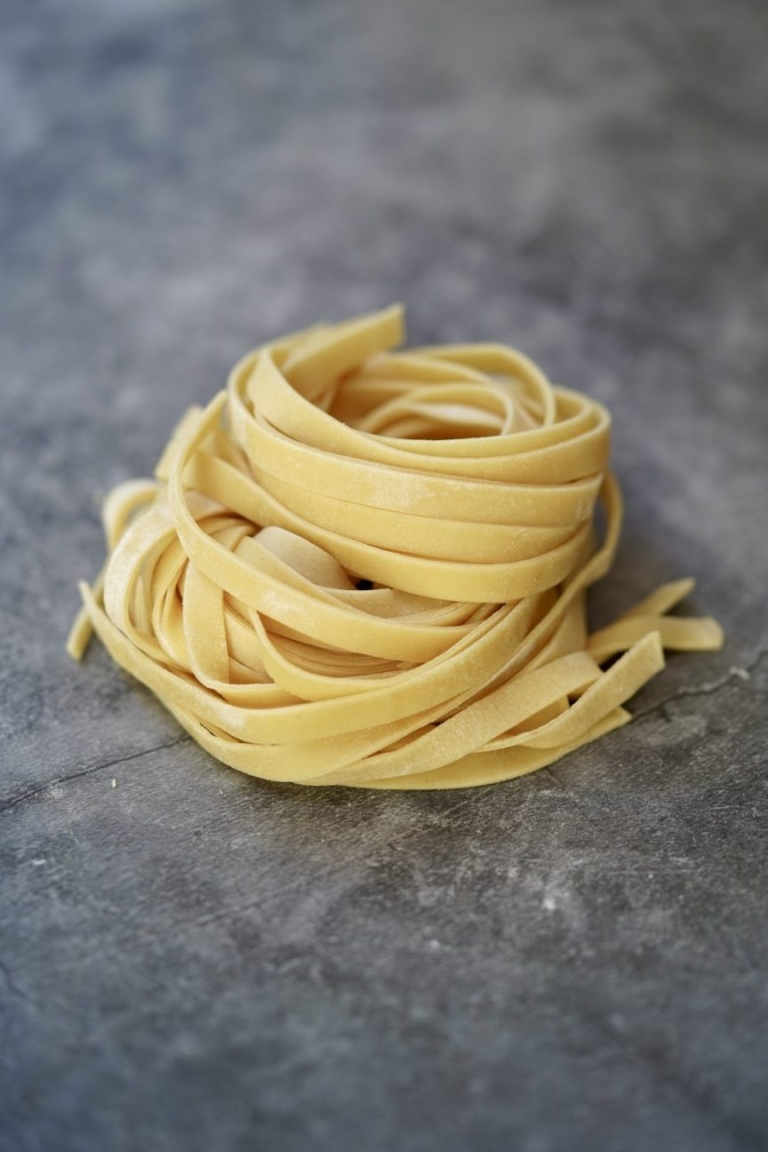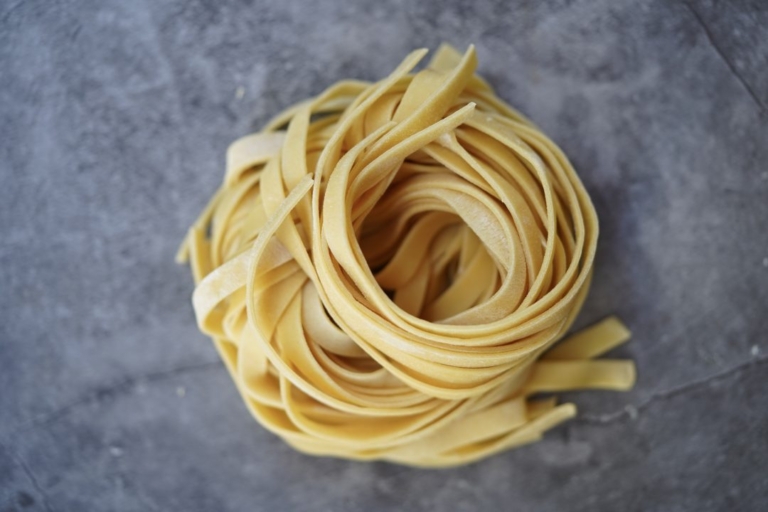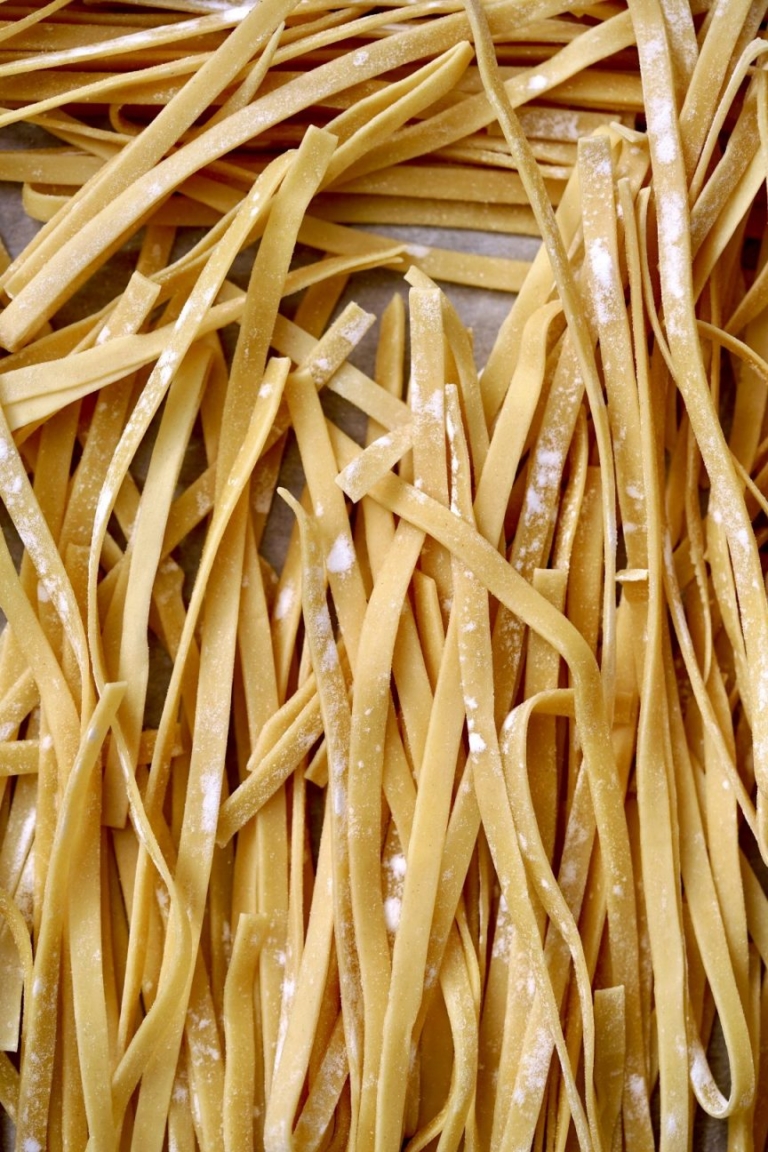Fresh Pasta Dough
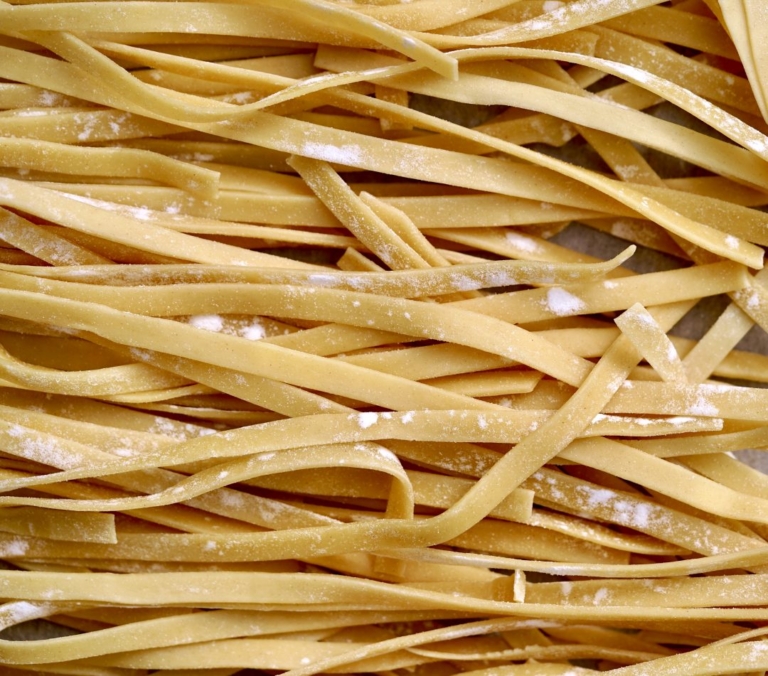
There is nothing better than fresh pasta. And despite what many believe, fresh pasta dough it’s not all that difficult to make, you can even make it in a kitchen mixer. Making homemade pasta was what I call a pandemic obsession. Along with homemade sourdough, I spent many hours making home pasta as I found it both relaxing and therapeutic. I also thoroughly enjoyed eating it! Bolognese and carbonara were go-to favorites my boys begged for whenever I whipped out the pasta machine.
Ingredient-wise, making fresh pasta dough is not that complicated, as there are only a few basic ingredients required. Yet, despite that, there are hundreds of recipes on how to make it. Here’s the takeaway, the amount of eggs, (whole or yolks), the use of olive oil (or not), and the salt amount can vary in every recipe, so it’s just about finding the recipe you prefer. My pasta dough recipe has a nice flavor balance, is easy to make, and is sturdy enough for novice cooks to work with so I hope you try it.
Making Pasta With A Pasta Machine
Once you have made your fresh pasta dough and allowed it to rest for 30 minutes, it’s when the real work begins. To start, remove the plastic wrap and transfer the dough to a cutting board. Cut the dough into four equal wedges. Set one wedge aside and wrap the remaining three in the plastic wrap again to prevent them from drying out. Don’t skip this step. The dough will dry out quickly. Sprinkle a baking sheet generously with flour, and set it near your work station
Use your hands to shape the dough wedge into a flat oval-shaped disc. Feed the dough through your prefered pasta machine on the widest setting. Once the sheet comes out, fold it into thirds, similar to how you would fold a letter you’re about to place in an envelope. Feed the dough through the rollers again, then repeat this process 2 more times, still on the widest setting. Next, continue to feed the dough through the rollers as you gradually reduce the settings, one pass at a time, until the pasta sheet reaches your desired thickness. If the dough starts to get a bit sticky going through the rollers, just re-flour the dough, being sure to coat both sides.
Once your pasta sheet is ready to go, sprinkle it with flour once more. Then connect the cutter attachment to your pasta maker. Feed the pasta sheet through the attachment to create your desired shape of pasta. Then transfer the cut pasta to a drying rack (cleaned hangers actually work just as well) or swirl the pasta into little pasta nests and lay them on a floured surface to dry for 30 minutes. Repeat with the remaining pasta dough.
Note: The process for the stand mixer is mainly the same as using a traditional pasta maker, just slightly easier since you do not need to hand crank the machine.
How To Roll Fresh Pasta By Hand
To roll out fresh pasta by hand, similar to the above method, first cut the dough into four equal wedges. Using your hands, shape one wedge into a flat oval shaped disc. Transfer the disc to a cutting board, and use a lightly floured rolling pin to roll out the dough until it reaches your desired level of thickness (typically that is between 1-2 mm thick). Add additional flour to your work surface as needed to prevent sticking.
Using a chefs’ knife (some like to use a pizza cutter), slice the dough into 5-inch sections. Sprinkle each section with a little flour. Then, starting on the short side of the sections, roll them up into very loose, flat cylinders. Cut the cylinders cross-wise to create your desired width of noodles. Then transfer the cut pasta to a drying rack, or swirl it into little pasta “nests” to rest for 30 minutes.
Flour Types For Pasta Making
Personally, I prefer to make my homemade pasta with “00” flour. “00” flour refers to special Italian milled flour that is used for pasta making. This flour is considered similar to unbleached all-purpose/plain flour, which is a mix of hard and soft wheat, which creates a dough that is silkier and maintains a chewiness when the pasta is cooked. Some people like to use half “00” and half semolina flour, which makes the pasta a little more sturdy. That said, any of these three flours work well.
- “00” flour: My favorite, which makes the texture extra silky.
- Semolina flour: A heartier flour, made from durum wheat, which can help the pasta cling better to the sauce. (Semolina is also my prefered flour to sprinkle on the cutting board and pasta, while you are in the process of rolling out the dough).
- All-purpose flour: Works rather well if this is the only flour you have on hand.
By hand or machine made, making homemade pasta dough (and pasta) is a worthy endeavor and one I encourage people to try if they’ve never made it before. Although I like to watch the amount of pasta (or carbs) I consume these days, a bowl of fresh pasta is memorable and well worth the calories if you ask me.
Fresh Pasta Dough
Ingredients:
- 2 1/2 cups 00 or all-purpose flour (ok to blend as well)
- 4 eggs
- 1 tablespoon Extra Virgin olive oil
- 1/2 teaspoon fine sea salt
Directions:
- Place the flour, eggs, olive oil and salt on the bowl of a food processor such as a Cuisinart, fitted with a blade attachment and pule on/off till it resembles course grands of sand.
- Remove the dough and using your hands make into a ball. Kneed the dough for 1-2 minutes until smooth. Lightly wrap in plastic wrap and allow to rest on the counter 30 minutes or in the refrigerator for up to one day.
- Use the dough with your preferred pasta machine per the manufactures instruction. Note: cooking time will vary based on thickness, I typically cook mine for about 2 minutes.


